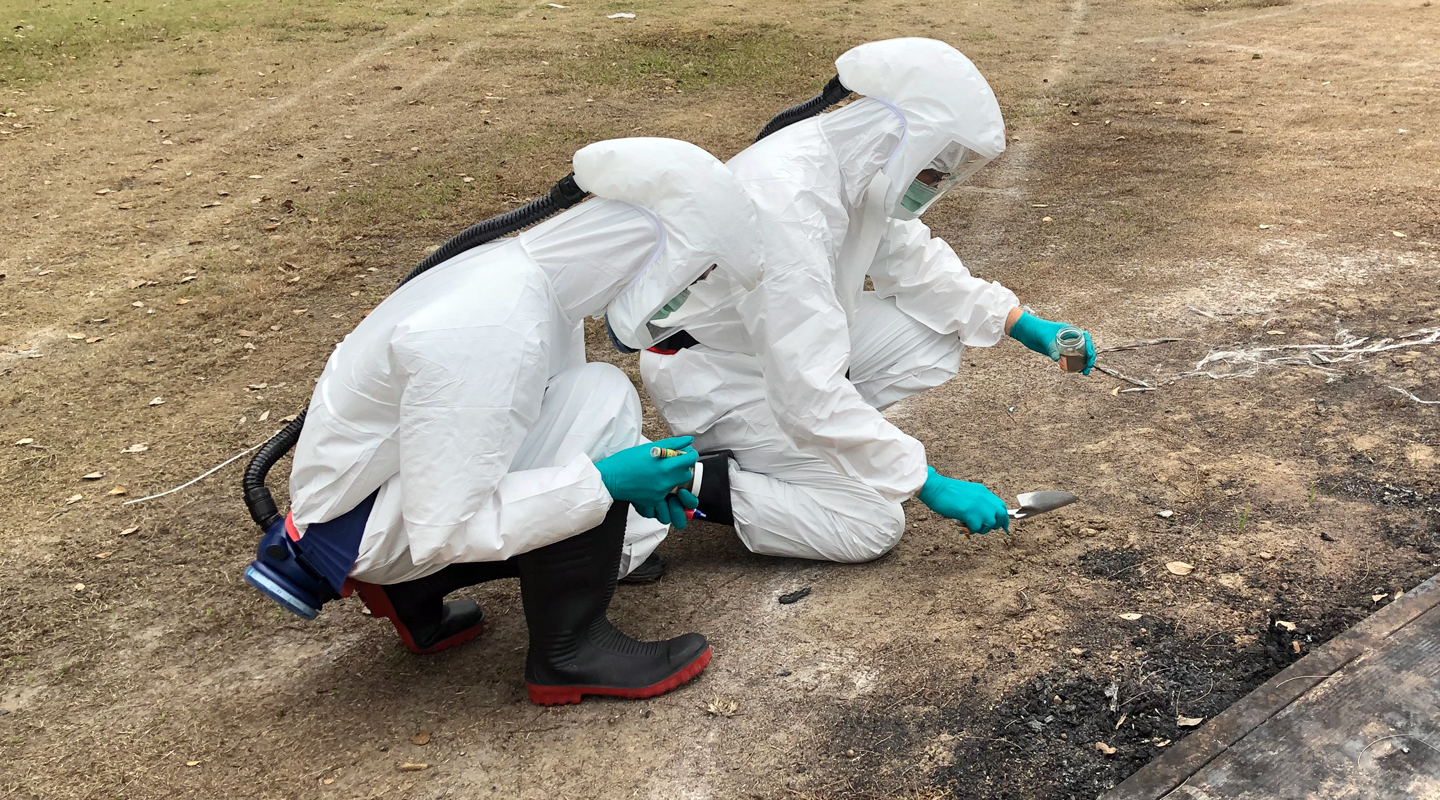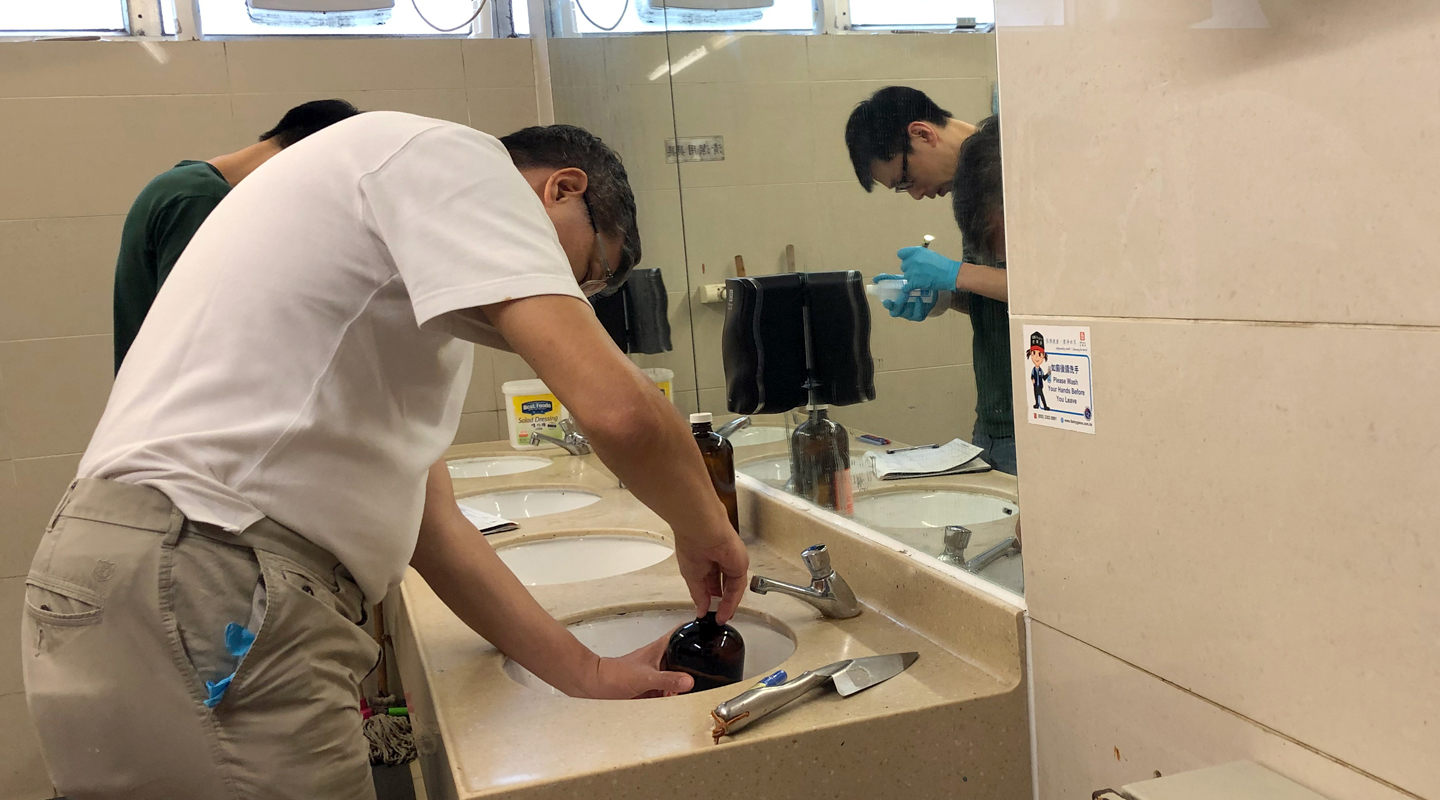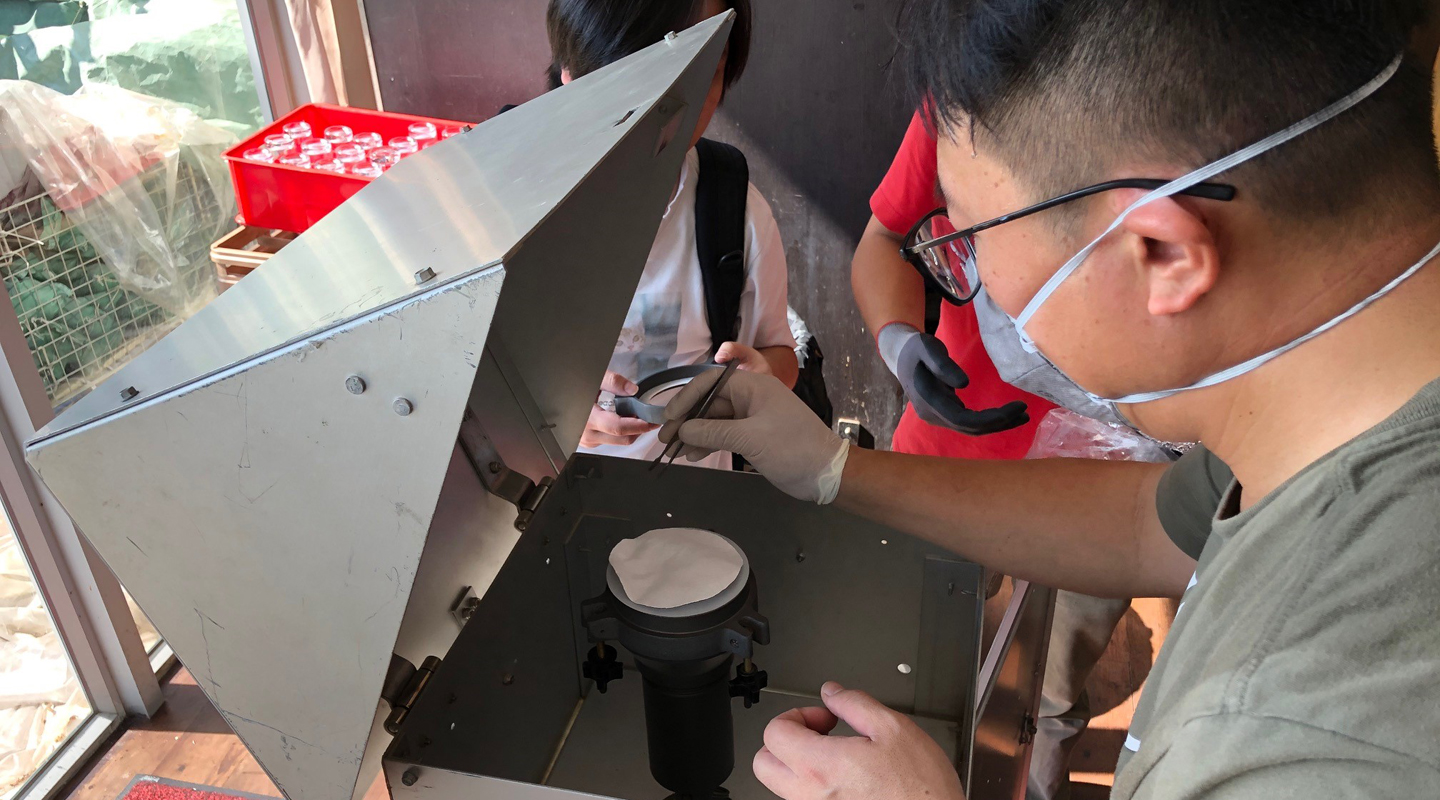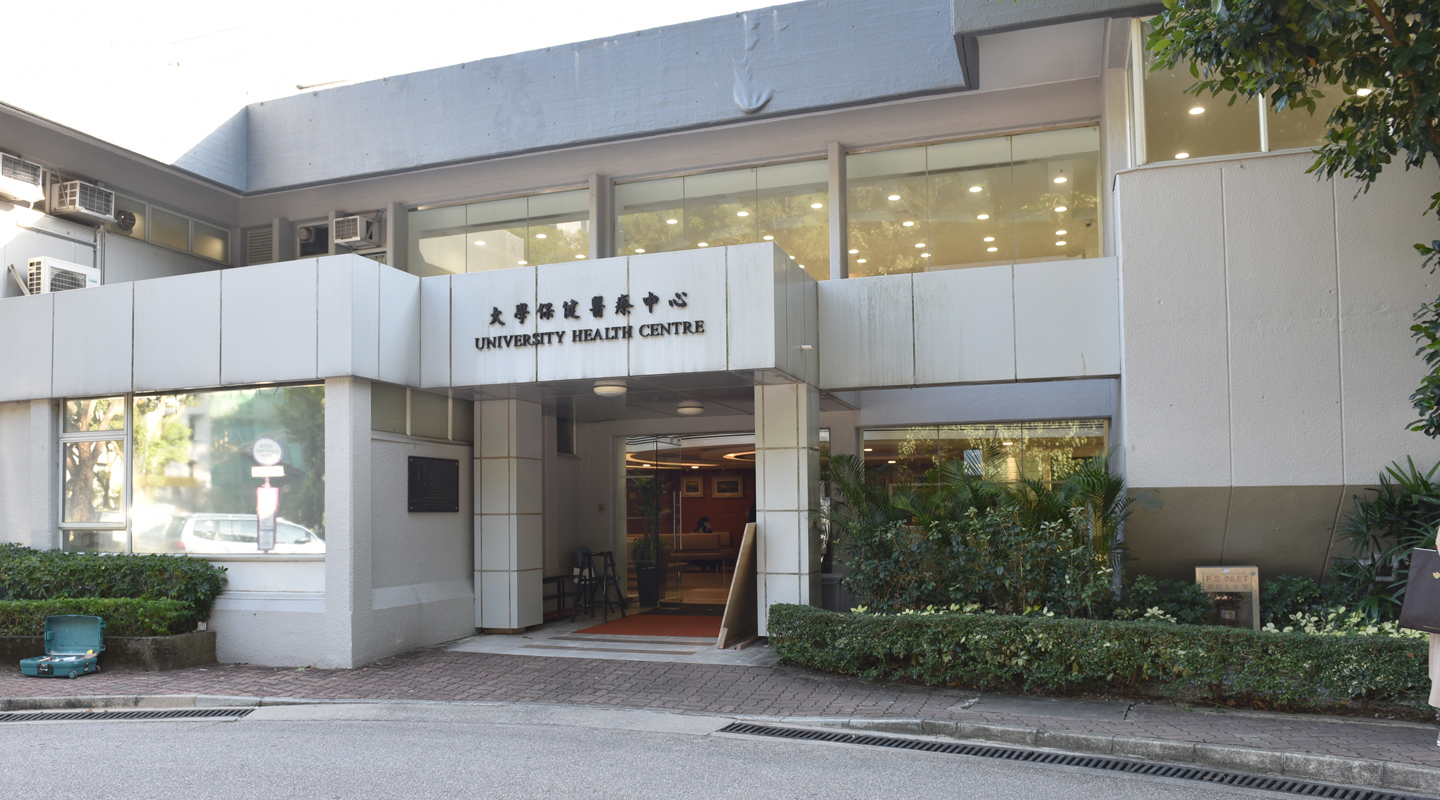Dear readers, With the launch of e-newsletter CUHK in Focus, CUHKUPDates has retired and this site will no longer be updated. To stay abreast of the University’s latest news, please go to https://focus.cuhk.edu.hk. Thank you.
Taking No Risk of Low Risk

In the blockage of the Tolo traffic which began in the morning of 11 November, parts of the CUHK campus, chiefly the area on Campus Circuit East near No. 2 Bridge, became the battleground between the police and black-clad protesters. Many rounds of tear gas, sponge grenades and rubber bullets were fired by the police, while the protesters hurled bricks and petrol bombs in return. Though the violent conflicts were eased by the end of the week with the retreat of both sides, campus operation and services were disrupted for another week. Chief among the salvaging efforts in the days that followed was the testing for harmful chemicals to ensure safety for all those who live and work here. CUHK Newsletter (NSL) talked to Mr. Ralph Lee (RL), Director of University Safety.
NSL: What would tear gas and fire bombs do to the environment?
RL: Residues from tear gas and associated contaminants are spread in the form of fine dusts and particulates. It is therefore imperative that we tested for the soil and other elements in and around the area where the conflicts took place. The harmful chemicals tested are Polychlorinated Biphenyls (PCBs), Polycyclic Aromatic Hydrocarbons (PAHs), Cyanide and Dioxins. Needless to say, exposure to high doses of such chemicals may prove hazardous to health.

NSL: What was done to ensure our campus is safe from these materials?
RL: Immediately after the conflict was over, my office appointed an independent accredited laboratory, ALS Technichem (HK) Pty Ltd, to collect soil, water and air samples to test for the abovementioned chemicals. The samples were mostly taken from the areas that saw the most intensive conflict between police and protesters, but some were also taken from more remote sites to give comparisons. Soil and water samples were taken on 19 November while air samples were taken on different dates from 21 November to 29 November.

NSL: Prof. K. M. Chan of the School of Life Sciences, himself an expert on environmental biochemistry and toxicology, had also done some sampling himself, hadn’t he?
RL: Yes, he collected 12 soil samples on 15 November. His samples were also sent by my office to ALS Technichem (HK) Pty Ltd for analyses.
NSL: What testing methods/standards were adopted for the samples?
RL: ALS Technichem (HK) Pty Ltd adopts the USEPA 8270/GCMS method in testing for PCBs and PAHs, and APHA 4500CN: B, C, E, I for Cyanide. For Dioxins, the samples have to be sent to its overseas laboratory in Prague, Czech Republic, which will adopt the USEPA 1613/HRGC-HRMS method.
NSL: What are the results?
RL: The results that have come back so far indicate that no significant amount of Dioxins, Cyanide, PCBs or PAHs was detected in the water and soil samples and colleagues should not worry about these pollutants.
NSL: Should we worry about the water supply on campus?
RL: Water is supplied to the campus community by sealed pipes and the risk of contamination should be very low.
NSL: What about the air we breathe?
RL: Where it is open and ventilation is good, the risk should be low. However, we took samples from a more expansive area on campus. The test results will be available soon.

CUHK Newsletter also talked to Dr. Scotty Luk (SL), Director of University Health Service.
NSL: What symptoms should we be watching out for if the working population on campus were somehow exposed to harmful materials?
SL: The remains of tear gas particles will cause irritation to mucous membranes especially over eyes and the respiratory tract. Some people may also develop skin rash after direct contact with the particles. Thus, the ocular, respiratory and dermatological areas are the main bodily areas to look for symptoms.
NSL: The campus has resumed normal operation since 25 November. Have you noticed anything special in the students or staff who visited the University Clinic?
SL: The campus public should seek help from the University Clinic or other medical personnel if they experience symptoms they believe to have been triggered by contact with chemical particles. From the data retrieved from the University Clinic since 25 November, we did not observe any trend or aggregate of patients with these symptoms.


TC
This article was originally published in No. 547/548, Newsletter in Dec 2019.